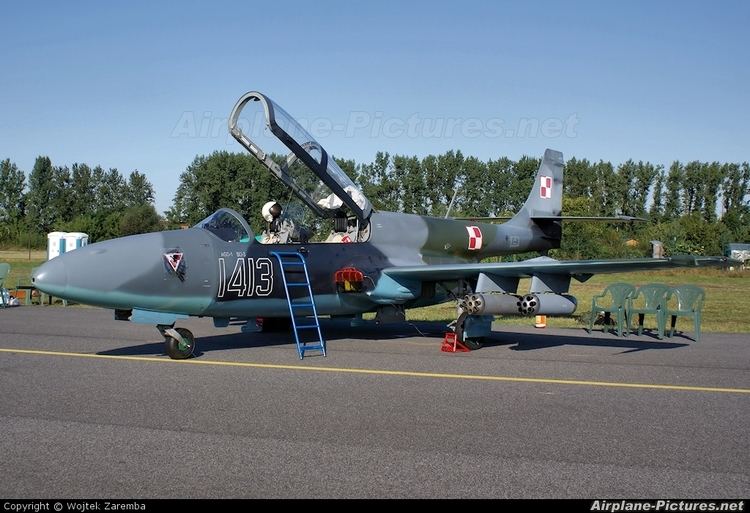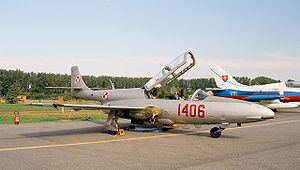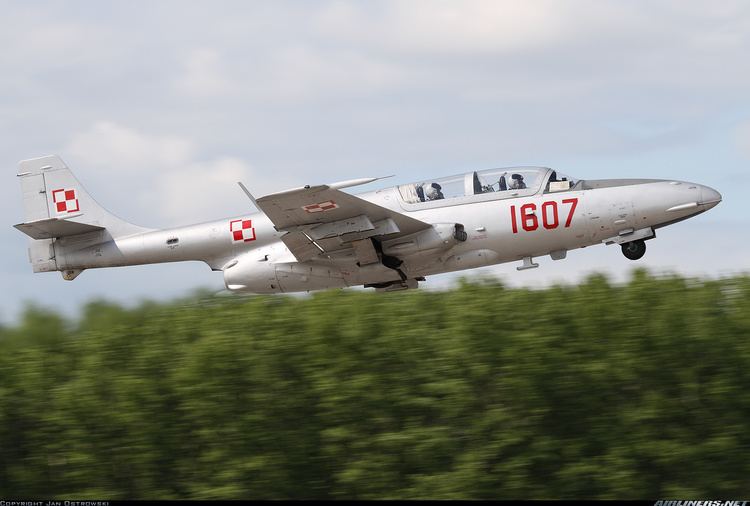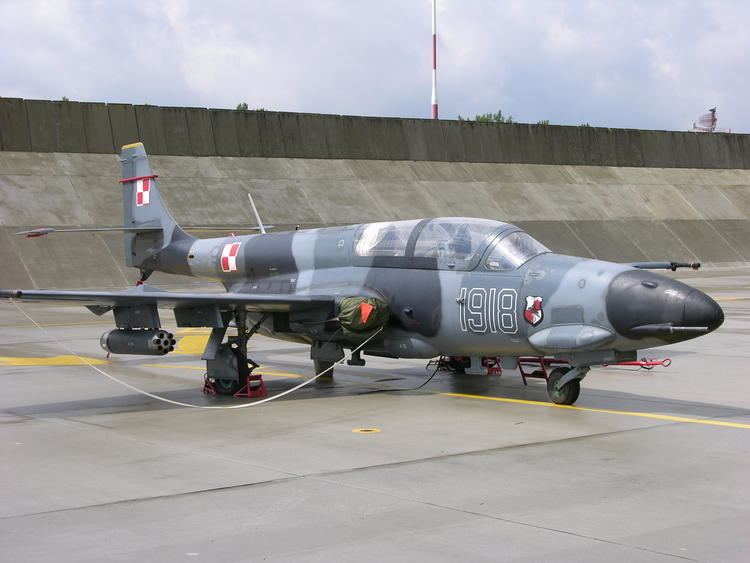Top speed 720 km/h Length 11 m First flight February 5, 1960 Number of seats 2 | Wingspan 10 m Engine type WSK SO-3 Manufacturer PZL Mielec | |
 | ||
Pzl ts 11 iskra pierwszy pr bny rozbieg po remoncie
The PZL TS-11 Iskra (English: Spark) is a Polish jet trainer aircraft, used by the air forces of Poland and India. It is notable as the main training aircraft of the Polish Air Force, and as the oldest jet aircraft still in service in Poland.
Contents
- Pzl ts 11 iskra pierwszy pr bny rozbieg po remoncie
- Pzl ts 11 iskra fighter trainer jet
- Development
- Design
- Operational history
- Variants
- Operator
- Former Operators
- Specifications Iskra bis D
- References

Pzl ts 11 iskra fighter trainer jet
Development

The aircraft was designed in response to a Polish Air Force requirement for a jet trainer. The main designer was Tadeusz Sołtyk - hence a designation letters TS. The new aircraft was the first jet aircraft designed in Poland. Work started in 1957, the first prototype powered by an imported British Armstrong Siddeley Viper 8 of 7.80 kN (1,750 lbf) was flown on 5 February 1960. The next two prototypes, with a Polish copy of the Viper engine named the WSK HO-10 engine were flown in March and July 1961.

The new Aircraft fulfilled requirements and, after tests, was accepted for the Polish Air Force as the TS-11 Iskra bis A, produced since 1963. From about 1966, the aircraft were produced with a new Polish-designed engine WSK SO-1 with thrust of 9.80 kN (2,200 lbf). From 1969, WSK SO-3 engines with longer time between overhauls were used and later improved version WSK SO-3W with thrust of 10.80 kN (2,425 lbf).
Design

All-metal jet trainer aircraft, conventional in layout, with mid-wings. Wings are trapezoid-shaped, with leading edge swept at small angle. Air intakes in wings. Single jet engine has an exhaust under a boom with tail fin, which gives the aircraft an unusual silhouette. The two crewmen have ejector seats. The aircraft has no radar (apart from the TS-11R). It can be fitted with photo cameras.

Poland is currently developing the new TS-11S Iskra (Spark) for future jet trainer. It will be equipped with new avionics, strengthened structures and a more powerful engine.
Operational history
In 1964, the TS-11 prototype beat four world records in its class, among others the speed record of 839 km/h (524 mph). The Iskra competed as the standard jet trainer for the Warsaw Pact, but lost out to the Czechoslovak plane Aero L-29 Delfín. Poland became the only Warsaw pact country to use the Iskra. A total of 424 aircraft were built by 1987, when production ceased. A total of 50 aircraft Iskra bis D were exported to India in 1975, then further 26 in the 1990s.
In 2002, Poland still had 110 TS-11s, including 5 TS-11Rs. The Iskra became Polish first and only jet trainer so far - the programme for a successor, the PZL I-22 Iryda (later designated M-93 Iryda), failed for several reasons and few were built. In Indian service, Iskra was withdrawn by 16 December 2004. During service, seven were lost, killing four crew.
In 2013, Poland had 30 (total number of school aircraft: TS-11, PZL-130) operational Iskras'
From 1969 TS-11s have been used by the Polish aerobatics team, initially called "Rombik", and currently "Biało-Czerwone Iskry" ("White-and-Red Sparks").
The UK has one fully operational ground running TS-11 Iskra (1018) which is part of the Cold War Jets Collection a museum based at Bruntingthorpe Aerodrome, Leicestershire.
Variants
Operator
Former Operators
Specifications (Iskra bis D)
Data from Jane's All The World's Aircraft 1976-77
General characteristics
Performance
Armament
